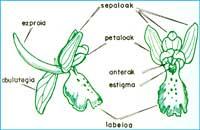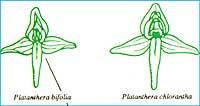Orchids of Euskal Herria
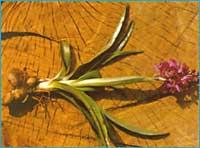
The orchids present interesting biological properties. We can distinguish three types: terrestrial, saprofitos and epophytes.
The first ones grow settled in the soil, where they take the necessary food. Saprofites live in decomposing organic matter (according to fungi). The epiphytes grow on trunks and leaves. They are not parasites and feed on the perfume that forms in tropical forests. In Euskal Herria they are not found.
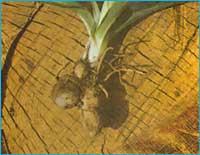
Thanks to these adaptations, orchids develop in different conditions and places of residence: forests, meadows, peatlands, scrubland, sand hills, mountains, marshes, etc.
General characteristics of orchids
Most orchids are tubers, with less generous roots. The foods found inside these tubers make the plant develop well. If we analyze the root of a flowery orchid, we usually find two tubers (sometimes three), one quite wrinkled, another robust and well filled. The first is the one used this year to achieve a good derail of the plant. The other will be reserved for the following year. If the latter is completed well, the orchid that will be created the following year will be very nice. These tubercles can be in the form of egg, spherical and palmate.
Leaves, stem and flowers
The leaves appear spirally or in two rows. Sometimes they surround the stem with the base, usually with chlorophyll function. Normally lanceolate, whole, nervated, without points and with points can appear in the same species.
The stem is a vegetal axis, erect and of variable size. Being cylindrical or angular, along its length can appear small leaves as the bract.
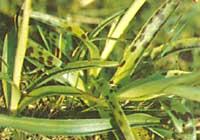
The flowers, in the greyhounds or bushes, are placed on a bract. The morphology of the flower is very special, adapted to the flowering for the attraction of insects.
Parts of the flower
In the bud appear three sepals with colors. Two of every three petals of the corolla are similar to the sepals and the third, the labellum, in the form of lips. This labellum can take very different colors, very striking. At the rear of it are the stamens, forming a column next to the stigma. Stamens are one or two, usually one of them is fertile. The petal grains of each sachet of florin are wrapped in a mass (polinium), being collected by a conflicting substance. It is a substance by which the flowery in the insects is well adhered, fulfilling the cycle of pollination.
Low ovary, single-lobe, with 2-3 stigmas. The seeds are very abundant. In each ovary approximately 100,000 can be found. Being of simple structure, they only germinate in very suitable conditions.
As can be seen in the following photos, the same species can present different flower colors. All these varieties make the work of botanists difficult. Some of them are new subspecies that do not reach the consensus of the number of species of some families. Undoubtedly, depending on whether the places of residence of these orchids change (and today that is happening a lot), they should go to disappear or appear the adaptations that the medium demands. There are species that are currently colonizing different places of residence, showing special characteristics for evolution.
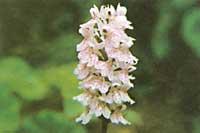
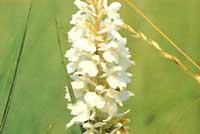
The adjacent plant (Dactylorhiza maculata), along with other species, is dispersed in the meadows of our environment. The animals that circulate through it respect these plants perfectly. However, despite defeating the donkey against these dangerous enemies, the chemical fertilizers and pesticides used are disappearing.
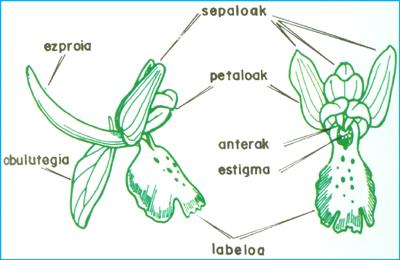
Serapias cordiera.
Some orchids tend to expand. It is quite common in the north of our territory, especially on the coast and every day more widespread.
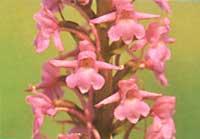
Gymnademia conopse.
It is very rare to see this aromatic orchid below 200 m. It can be seen in our summits. Visible in Europe at 2500 m of height. As it happens in many plants, if we analyze its scientific name, the path used to delimit this species is very representative. For example, conops in Greek means mosquito. If we look at their flowers, we might think they are shaped like mosquitoes.
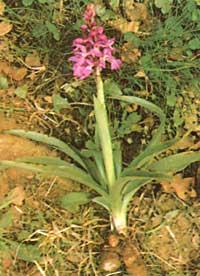
Orchis mascula.
The orchids have been used historically in Euskal Herria. The most used orchid has been the Orchis mascula, especially in Alava to cure the weakness and diseases of the prostate. On the other hand, it has been used as an aphrodisiac (griegoz orchis indica testicles). From its bulb is obtained a substance type starch, which is vasconia. It is of great value as food, but fortunately it is not anything economically profitable. A drink with pebbles is also prepared.
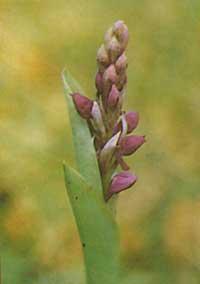
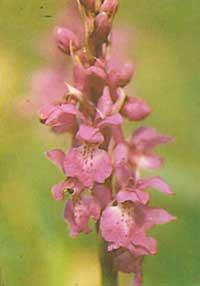
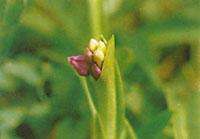
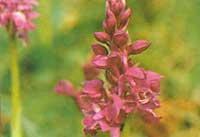
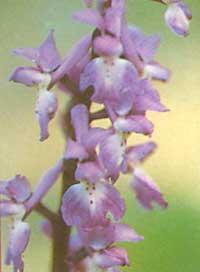
Distribution of this orchid
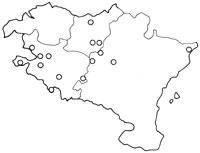
This species is very rare in the Basque Country. Within this genus only 3 species are known, two in Asia and the other one appears in the forests of our area.
This orchid is a saprophite plant, that is, it does not produce chlorophyll and to survive needs to parasite organic matter. Some botanists consider that the biological cycle of this orchid is even more complex. Through a process called mycorrhiza, there is a symbiotic relationship between the roots of this orchid and some fungi. That is, this plant obtains the organic matter through fungi, without any problem in this union.
This type of parasitism of great unity or specialization is given on more than one occasion in these orchids and is essential for the development of the seeds of these plants.
This association shows that if it is not possible the displacement of orchids will be very difficult.
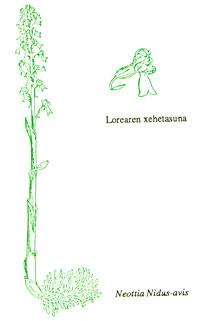

Distribution of Platanthera chlorantha. It is very rare. It appears in meadows and simple forests.
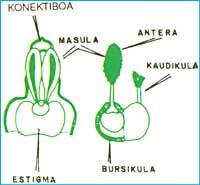
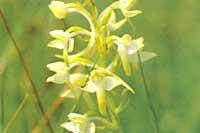
Within this genus, in Euskal Herria only appear two of the 80 species known worldwide.
The flowers of these plants usually have special glands. Its warm odors attract insects by ensuring the cycle of pollination.
Since the spurs of these plants are very long, the insects in search of the nectar must be long trumpets. On the other hand, the whitish color of the flowers means that pollination occurs at night
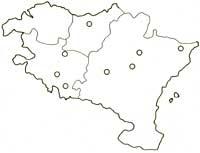
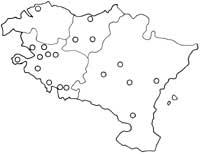
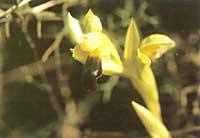
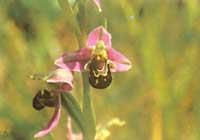
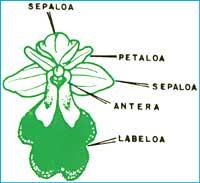
This quite abundant plant in the Mediterranean is very rare in the north of our territory and more abundant in the south. Especially present in meadows, forest clearings and marine slopes. First is the orchid that blooms, and that with the help of time can appear in winter.
The most remarkable characteristic of this family is the shape of the flower, that is, with a high degree of specialization, the flowers have managed to form female insects, ensuring the cycle of pollination. In addition, they have a higher degree of specialization, obtaining special odors from female insects. Thus, deceived by the insect, they approach these plants to fulfill their biological function. Consequently, we can think that if the orchids reproduce much, the insects will decrease and vice versa. However, the absence of insects or autopollination of some species ( Oprhys apifera ) have achieved.
Within this family appear numerous varieties and hybrids. Around 30 species appear in Europe. Only 12 of them are reproduced in Euskal Herria.
Ophrys apifera Listera ovata
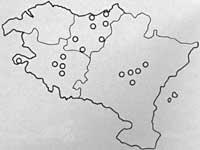
Relatively common species in Europe, rare in our territory. In Bizkaia it does not appear as can be seen in the attached map. It appears mainly in humid zones (robledales, alisedas, etc. ), especially in soils of organic matter.
Normally the situation of this plant (as occurs in most orchid species) is quite serious if we remove native forests. Without a doubt, measures must be taken. As an example, in some European countries, many species of orchids are protected by law.
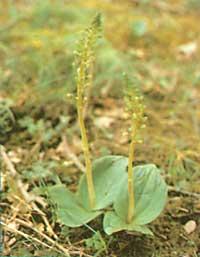
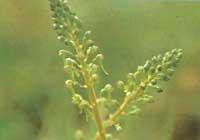
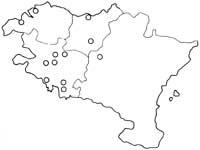
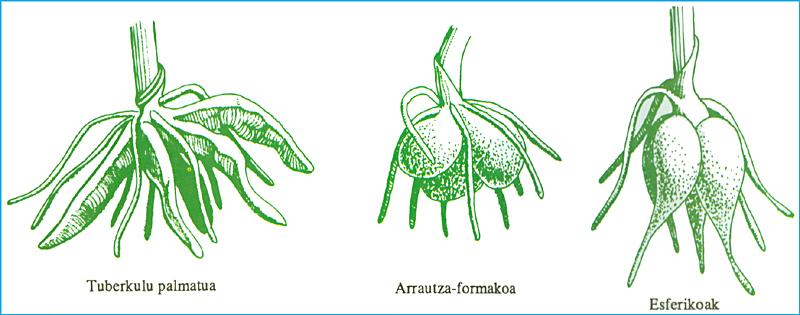
In the attached map, the distribution of this species is shown. This species can ever be seen in the oaks and coastal sandy areas.
To delimit well the number of species included in this genus, great controversies still occur among botanists, since this genus tends to produce hybrids.
Buletina
Bidali zure helbide elektronikoa eta jaso asteroko buletina zure sarrera-ontzian





